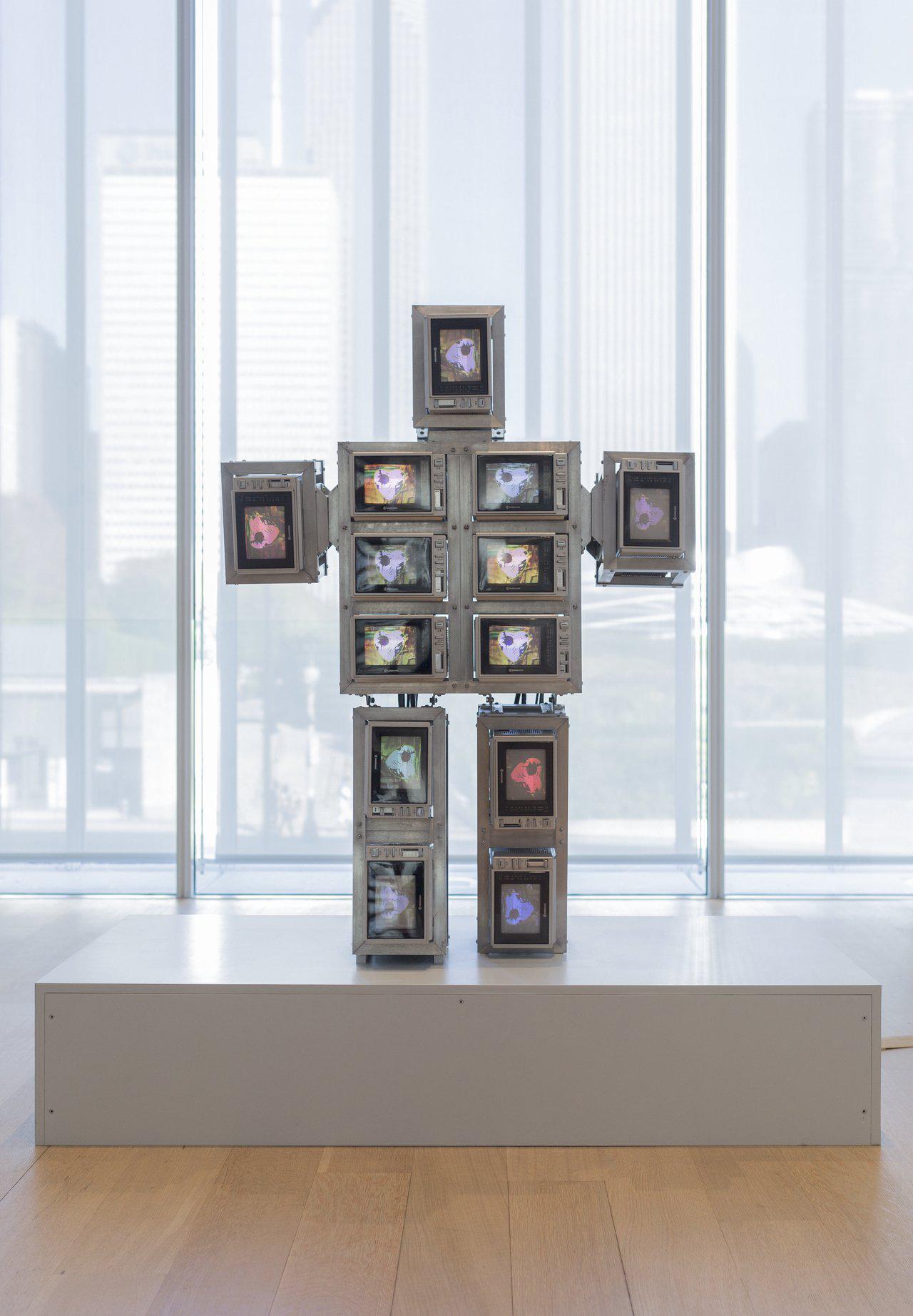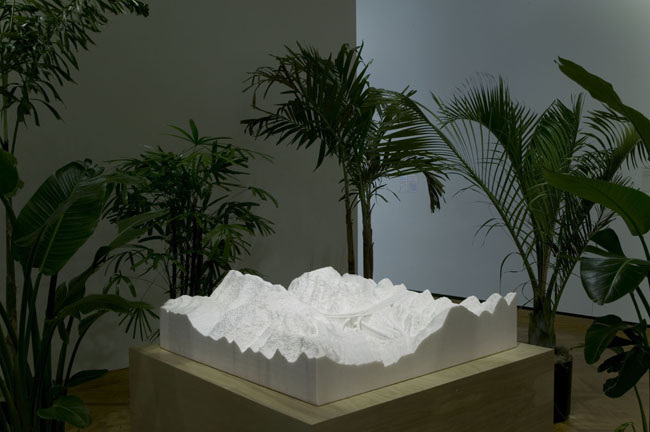A pioneering figure in electronic art, Nam June Paik was among the first to use television as an art form. Originally a composer of experimental and electronic music, he created performance work within the context of the Fluxus movement in the 1950s. The artist viewed his musical instruments as “objects with visual qualities,” which allowed him to move fluidly from using sound to incorporating images into his creations.1 Having begun exhibiting works with televisions in 1963, Paik was one of the earliest artists to use a Sony Portapak (the first portable video recording device) after it became available in 1965, producing his initial multimonitor video sculptures the following year.2
Family of Robot, the first series of video sculptures that Paik created, consists of three generations of family members, including a grandmother and grandfather; mother and father; aunt and uncle; and children. Paik pursued the theme of generational difference through his choice of materials, providing a unified history of family and technology. Viewed as a whole, this group of anthropomorphic sculptures incorporates media hardware from various stages of its evolution in the twentieth century. The grandparents’ heads are constructed of 1930s radios and their bodies of 1940s television frames refitted with Sony or Quasar screens, while the parents’ heads are more recent than their bodies. The children, including Baby, are made of newer televisions. In some cases, the children’s heads are two decades more advanced than their bodies, and in others, both sections are made of uniform parts. The Art Institute’s Baby—one of nine unique baby robots—was assembled from thirteen Samsung monitors, which at the time were the most up-to-date equipment manufactured in Korea. The monitors are placed in different directions in the aluminum armature, depending on the section of the body they represent.
In Family of Robot, television is used not as a means of disseminating information but rather as a more decorative element. Like its relatives, Baby displays an artist- created videotape—in this case, one that consists of flashing, vibrant images of hearts, psychedelic patterns, revolving bands and planets, and excerpts of newscasts depicting people, especially children, in Africa and India. Paik insisted that a balance should exist between nature and technology, a notion that he realized in this friendly looking figure, which is a remarkable product of his own time and effort.3
With this series, Paik suggested that technology is both a product of human innovation and a potential cause of our retreat from reality. In a sense, he explicitly humanized technology as a means of resistance, commenting, “One must . . . know technology very well in order to be able to overcome it.”4 Stating that the purpose of video art is “to liberate people from the tyranny of TV,” he was perhaps reminding us of the capability of technology—or, more specifically, of broadcast television—to consume our lives, and asserting the need for us to see it in a different form, such as art.5 Although Baby’s televisions are now dated themselves, this obsolescence only enhances the work’s ability to evoke the rapid transformation of technology.


